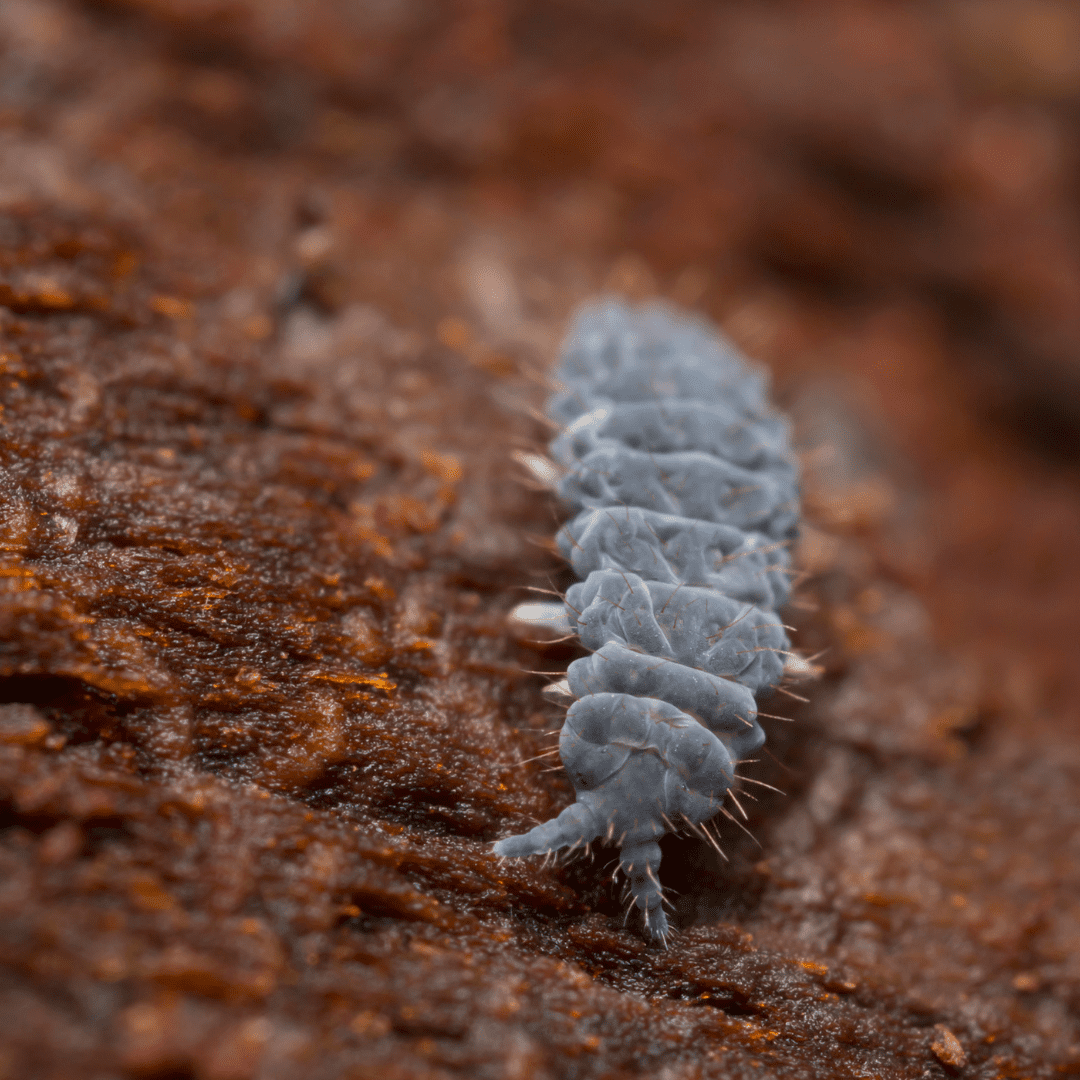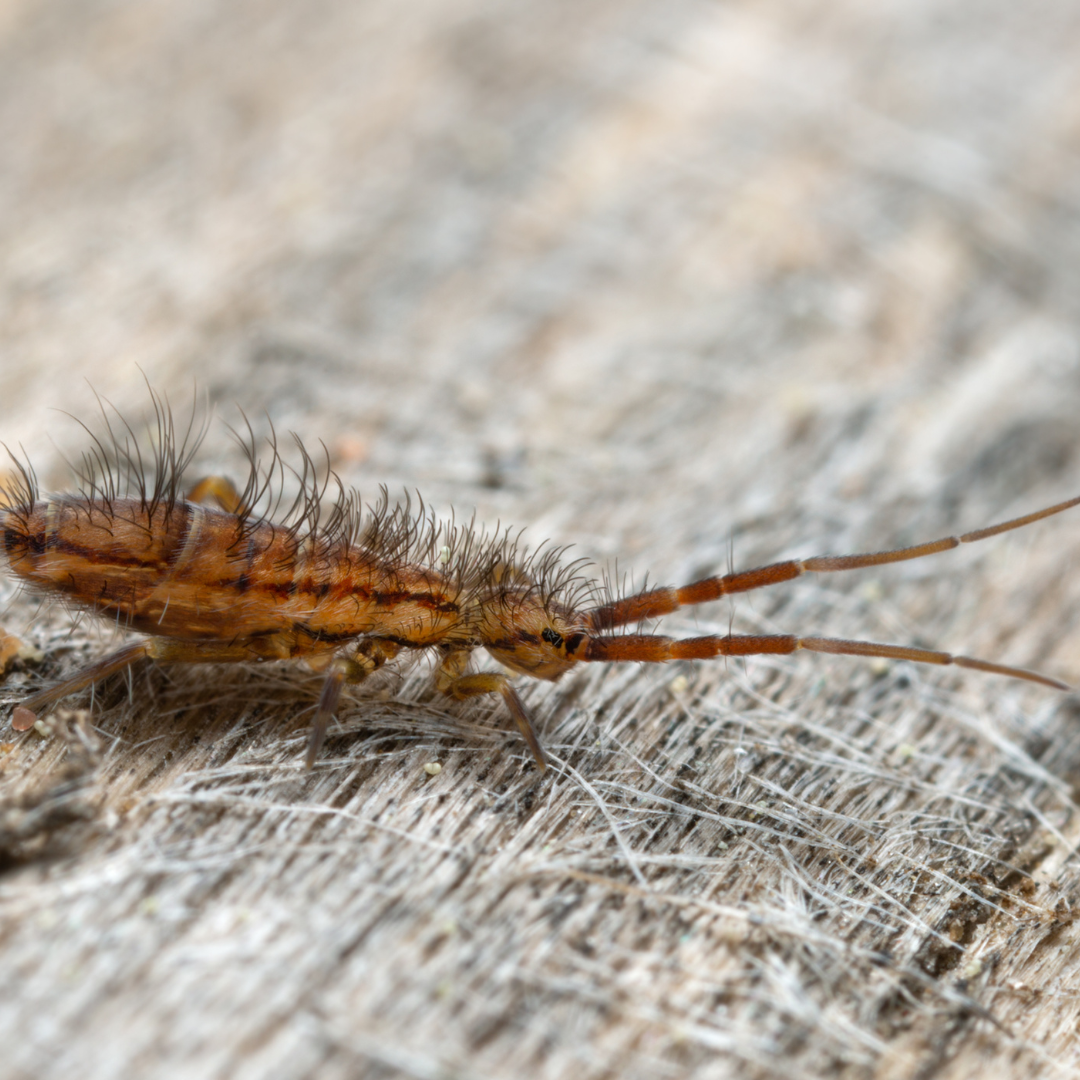

Springtails are tiny insects commonly found in soil, leaf litter, and decaying organic matter. They are known for their ability to jump long distances, thanks to a specialized structure called the furcula. Often attracted to moist areas, springtails might find their way into homes, especially in places with high humidity, such as basements or bathrooms.
For homeowners, a springtail infestation can be a nuisance. The key to getting rid of springtails is to reduce their access to moisture. Ensuring proper ventilation, fixing leaks, and using dehumidifiers can help create an environment that is less hospitable for these insects. Additionally, sealing cracks and removing organic debris from around the house can further discourage their presence.
In understanding what springtails are and how to manage them, it’s important to recognize their role in the ecosystem. Although they can be bothersome when they invade homes, they also contribute to the decomposition process and soil health.
Understanding Springtails
Springtails, often seen as tiny insects, show a variety of colors and behaviors. They thrive in moist conditions and use their unique physical traits for survival.
Characteristics of Springtails
Springtails are small, wingless insects usually measuring 1-2 millimeters in length. Their colors range from white and gray to vibrant hues like yellow and black. A distinctive feature is the furcula, a forked appendage on the underside of their abdomen that allows them to jump. This mechanism helps them escape predators.
They possess six legs, long antenna, and mouthparts suited for chewing. Springtails feed on decaying organic matter, fungi, and algae, making them important for nutrient cycling in ecosystems. Though they might appear similar to fleas, springtails are not pests to humans or animals.
Habitat and Behavior
Springtails prefer damp, humid environments such as soil, leaf litter, and decomposing wood. They are often found in gardens, greenhouses, and forest floors. Moist conditions are essential for their survival, as they help springtails maintain water balance through their permeable skin.
In dry conditions, springtails may seek out mildew or damp soil. They reproduce by depositing sperm packets on the ground, which females then pick up to fertilize their eggs. They thrive in environments with high moisture levels, making them commonly found in areas where there is rotting plant material or wet soil.
These behavioral adaptations allow springtails to play an essential role in breaking down organic matter and enriching the soil, demonstrating their importance in natural ecosystems.
Recognizing Springtail Infestation
Springtails are tiny pests often found in damp areas of homes. They thrive in places with excess moisture and can be a nuisance in bathrooms, basements, and kitchens.
Common Infestation Signs
Springtail infestations can be identified by their presence in moist areas like bathrooms, basements, and kitchens. Springtails are typically found near pools of water or on damp walls. They are very small, usually less than 6mm in size, making them hard to spot.
You might see small, jumping insects that appear similar to fleas. Unlike fleas, springtails do not bite and are not dangerous to humans. They often gather in large numbers, especially where there is moisture buildup. Check places like under sinks, around leaky pipes, and near windows with condensation.
Signs to watch for include:
- Small jumping insects near damp areas
- Groups of tiny insects around moisture sources
- Dark or spotted areas on walls where they gather
Differences From Similar Pests
Springtails can be easily confused with other small pests like fleas. It’s important to understand the differences to properly address the infestation. Springtails jump when disturbed, but they do not bite. Fleas, on the other hand, do bite and can be harmful to pets and humans.
Springtails are found in damp areas, while fleas are usually associated with animals and their bedding. If you find pests in damp environments such as bathrooms or basements, they are more likely to be springtails. Additionally, springtails have a different body structure and move differently compared to fleas, making careful observation key in identification.
Key differences include:
- Springtails: found in damp areas, do not bite, jump
- Fleas: found on pets, bite, also jump but are associated with animals
Understanding these differences can help prevent confusion and allow targeted treatments to eliminate the specific pest issue.
Springtail Prevention Strategies
Preventing springtail infestations involves controlling moisture and performing regular home maintenance. Proper steps can help keep springtails out of your home, making it a more comfortable living space.
Moisture Control
Controlling moisture is critical to prevent springtail infestations. Springtails thrive in damp, humid environments. One of the first steps is to look for leaky pipes and fix them promptly. Ensure that the basement and other lower areas of your home are dry by using a dehumidifier.
Proper ventilation is also essential. Use exhaust fans in bathrooms and kitchens to reduce humidity levels. Try to keep the indoor humidity levels below 50%. If you notice mold, address it immediately as it indicates excess moisture. Inspect windows and doors regularly to ensure there are no cracks where moisture can accumulate.
Home Maintenance Tips
Regular home maintenance can deter springtails. Seal cracks and gaps around doors and windows to prevent springtails from entering. Check and repair any damaged screens on windows. Make sure doors fully close and seal properly.
Maintaining the cleanliness of houseplants is also important, as overwatering them can create a moist environment that attracts springtails. Keep leaf litter and other organic material away from the foundation of your house. Regularly inspect basements and other damp areas for signs of springtail activity.
Taking these steps can significantly reduce the risk of springtail infestations in your home.
Effective Control and Elimination
Springtails can be controlled and eliminated using several methods. These methods include natural and chemical solutions as well as professional extermination services.
Natural and Chemical Solutions
Several natural remedies can help get rid of springtails. Vinegar is often used as it disrupts their exoskeletons. Simply mix equal parts of vinegar and water and spray it in affected areas. Neem oil is another natural insecticide, effective because it repels and kills springtails on contact.
Diatomaceous earth is a widely known natural option. It works by absorbing the oils and fats from the insect’s exoskeleton, causing them to dehydrate. Sprinkling this powder where springtails are common can be very effective.
Chemical solutions include bleach and various insecticides. Bleach can kill springtails almost instantly, but it must be used with caution and in well-ventilated areas. For more persistent infestations, pesticides designed for small insects can be useful. Ensure to follow the manufacturer’s instructions to avoid any unwanted side effects on health and environment.
Professional Extermination Services
When infestations become severe, professional pest control services might be necessary. They use advanced methods and equipment to ensure comprehensive removal. Professionals can assess the situation and treat it using methods such as fumigation, which might not be possible without specialized equipment.
Another benefit is that professionals have access to stronger, more effective chemicals that are not available to the public. This can significantly speed up the control process. They also provide follow-up services to ensure that the pest problem does not return, potentially saving time and effort in the long run.
In cases where natural and chemical solutions have failed, seeking professional help ensures that the infestation is handled efficiently and effectively. It removes the burden from homeowners who might not have the time or expertise to deal with persistent springtail issues.
Maintaining a Springtail-Free Environment
Preventing springtails involves proper gardening and home maintenance practices. These methods help eliminate their preferred damp and decaying environments.
Landscaping and Gardening Practices
Maintaining a tidy garden and avoiding excess moisture helps reduce springtail populations. Water plants in the morning to allow the soil to dry by evening. Avoid overwatering which can create wet, springtail-friendly conditions. Using well-draining soil also helps reduce moisture.
Remove decaying organic matter such as leaves, mulch, and compost regularly. These attract springtails searching for food. Be careful with store-bought mulch; it could harbor springtail eggs. Quarantine new plants for a few days before introducing them to the garden to prevent infestations.
Long-Term Home Care
Inside the home, manage moisture by fixing leaky pipes and ensuring proper bathroom ventilation. Springtails thrive in wet areas like basements and bathrooms. Use a dehumidifier to maintain low humidity levels in these spaces.
Houseplants can harbor springtails. Check the soil moisture and only water when the soil is dry to prevent a breeding ground. If springtails are present, consider repotting the plant with fresh soil. Glue traps placed around suspect areas can help monitor and reduce indoor springtail presence.
Why Choose STL Pest Control?
If you’re dealing with a persistent springtail problem, calling a professional exterminator like STL Pest Control can make a world of difference. Here’s why you should consider us:
- Experienced Technicians: Our team is highly trained and knowledgeable about springtail behavior and control methods.
- Customized Solutions: We offer tailored treatment plans to suit your specific situation.
- Advanced Technology: We use state-of-the-art equipment and environmentally friendly products to ensure effective and safe pest control.
- Customer Satisfaction: Our top priority is ensuring that your home remains pest-free, and we offer follow-up services to guarantee satisfaction.
- Quick Response: We understand the urgency of pest problems and strive to provide prompt service to address your concerns swiftly.
Frequently Asked Questions (FAQs)
Q1: Are springtails harmful to humans or pets?
No, springtails do not bite, sting, or transmit diseases. They are primarily a nuisance due to their large numbers.
Q2: Can springtails damage my house or belongings?
Springtails do not cause structural damage or harm belongings. They primarily feed on mold, fungi, and decaying organic matter.
Q3: How long does it take to get rid of a springtail infestation?
The time to eliminate a springtail infestation can vary, depending on the severity and the measures taken. Typically, significant reduction can be seen within a few days to weeks with proper intervention.

